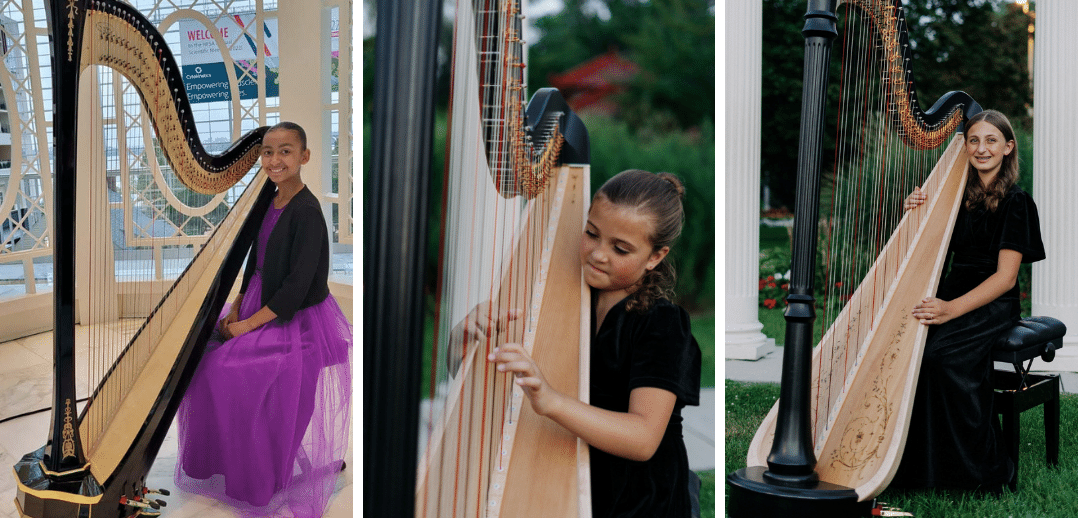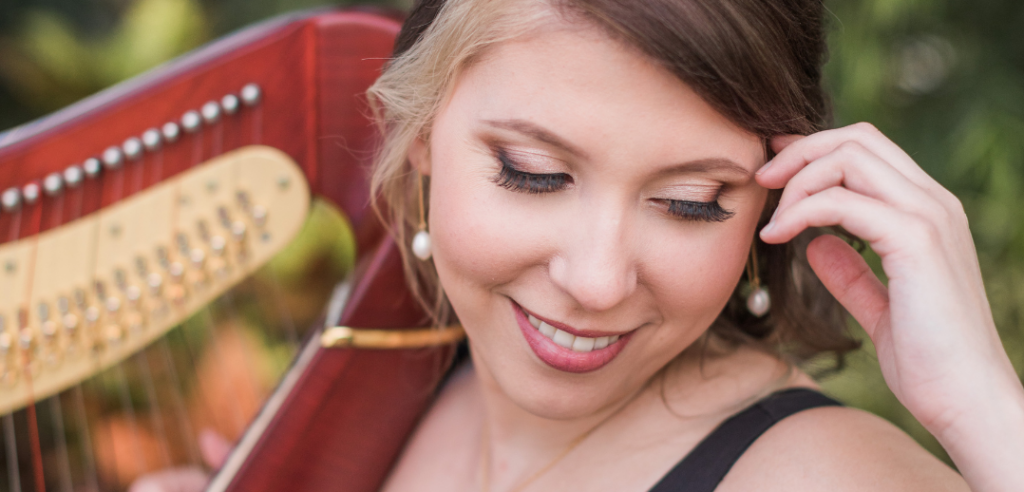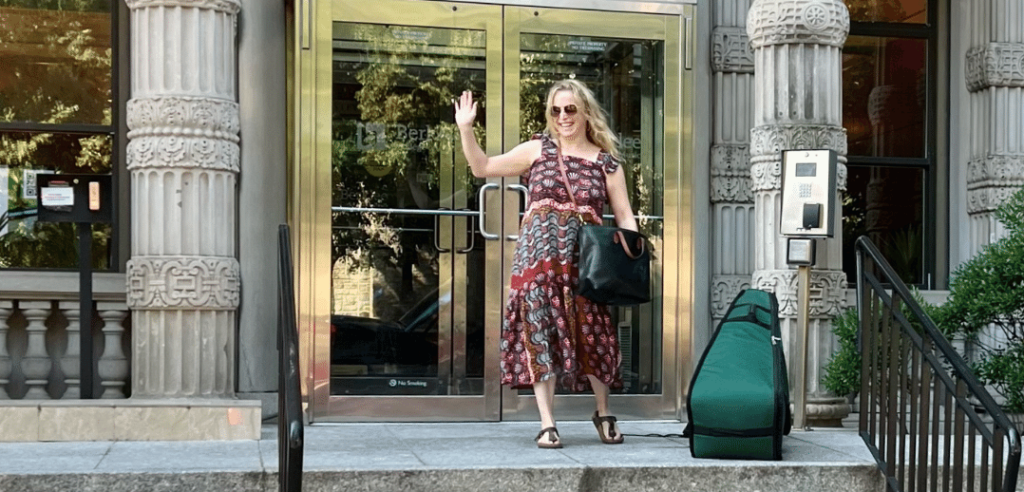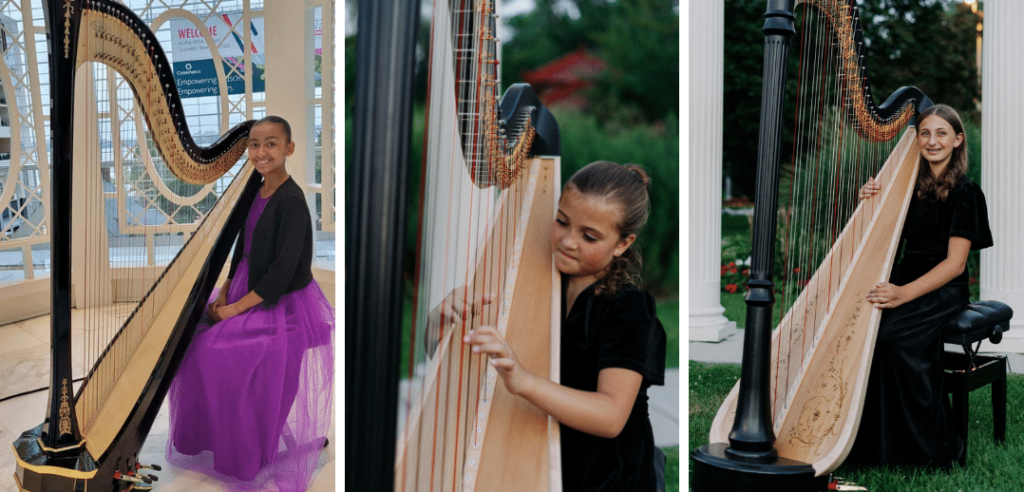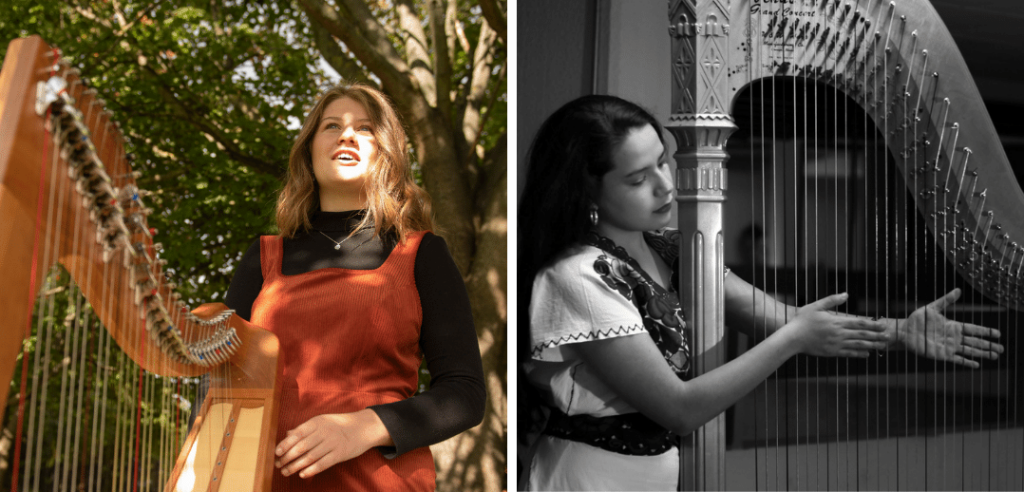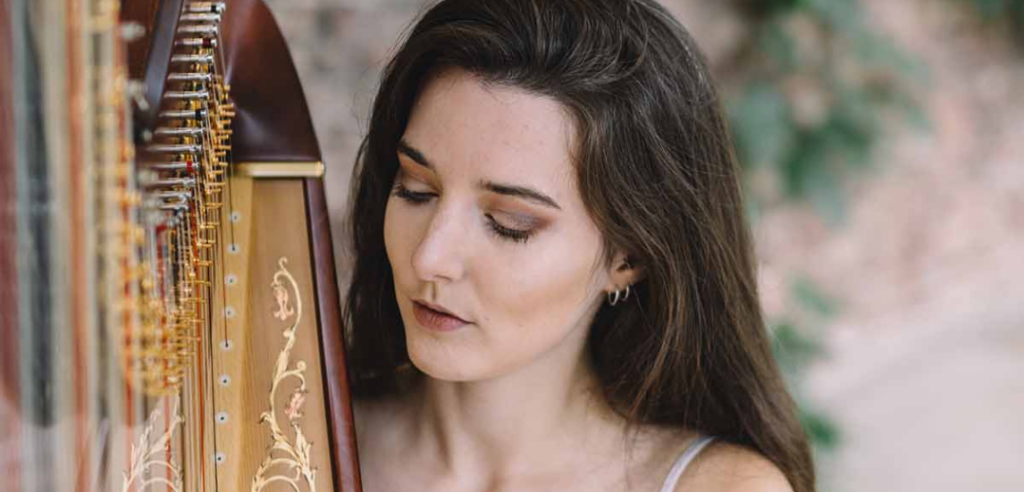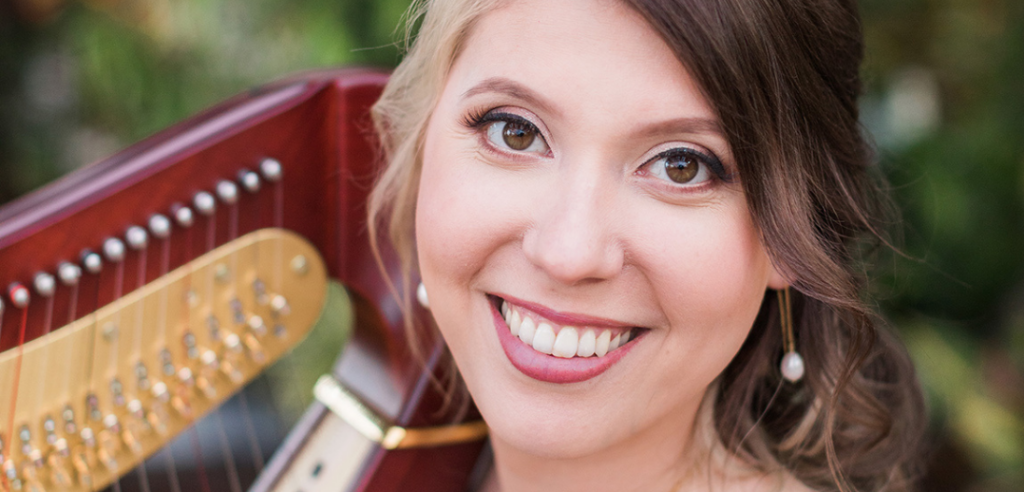In 2021 we began following nine harpists for our Practice Makes Harpist series to see how their practice affects their musical experience. In the second year of the series, we are checking in with the nine harpists we met in year one to see how their practicing has progressed over the last 12 months. In this installment, we’re revisiting our three youngest harpists.In the year since we’ve visited them, their interests and abilities have expanded. Each has developed clear goals. Their technical understanding of music forms has taken steps forward, but even more their joy in producing music has advanced. (See Practice Makes Harpist in our March/April 2022 issue for an introduction to these three young harpists.)
Sarah Ramson
Age: 13
Short-term goal: Improve as a performer.
Long-term goal: Use harp to enter a college.
Favorite piece: “Chanson de Mai” by Alphonse Hasselmans
For Sarah Ramson (top left), practice is a team effort. Her mother, Robin, helps her track and focus her practice to be very purposeful. Because Ramson’s time is limited, she uses a practice journal to make sure she’s prepared for specific events and advances with the repertoire that she needs to learn. Some days she gets up early to practice more, while on other days, ballet, golf, and other instruments dominate her time. Once in a while, she takes a few hours to just be a teenager, too.
This year marked Ramson’s transition to a full-size pedal harp that she purchased with money earned by playing concerts and gigs. Learning to play the new instrument demands careful focus and attention. “Some of the pedals give me a little bit of trouble,” she says. “I have to learn how to establish my weight better to make sure that they stay down. It’s definitely a challenge.”
Ransom’s teacher, Robbin Gordon-Cartier, says the young student had a great year. The intense preparation for her fundraising concert helped her learn time management. “I am pleased Sarah keeps up her repertoire and never loses the hard work she puts into learning pieces,” she notes. Finding optimal practice times is crucial for a student’s success. Due to Sarah’s challenging schedule, early mornings provide distraction-free time.
Samantha Ferris
Age: 14
Short-term goal: To increase practice time from 30–40 minutes/day to 45–60 minutes/day.
Favorite piece: “Muscade” by Bernard Andrès, and “Feuilles d’Automne” by Alphonse
Hasselmans
This year, Samantha Ferris (top right) played her first gig and discovered that the deadline of a scheduled performance helped keep her motivated. Time pressure may not be comfortable, but she quickly learned to appreciate preparation as an important life lesson. She loves performing and looks forward to future opportunities to share her music with audiences.
Samantha practices for improvement. Reviewing pieces brings her the most enjoyment, and learning new pieces is the hardest part of practicing since she finds note reading difficult. While she practices from her weekly assignment sheet, she chose not to keep a practice journal this year. Remembering that it was a helpful tool in the past, she says she might recommit to using one. However, she adds that writing down what she did and reflecting on it did keep all the work from blurring together.
Sabrina Ferris
Age: 10
Short-term goal: Perform “Carol of the Bells” at school in December. Learn and perform a Christmas duet with her sister at their church.
Long-term goal: Give first solo recital of about 30 minutes next year.
Favorite piece: “Undecided—I like too many to pick just one.”
Sabrina Ferris (top center) practices with structure. She starts with warm-ups followed by her current Suzuki piece. Then she has fun with an older, more familiar piece. Next, she goes over her new piece before working on difficult sections of that piece. Finally, she wraps up with some repertoire review. After all that work comes her favorite part of practice: putting a practice pom-pom into her practice jar. When the jar’s full, she chooses a special treat, like making homemade ice cream with her teacher.
Sabrina hasn’t kept a practice journal this year because she says it takes her too long to write things down, but she notes it does make her practice feel more effective.
Sabrina’s teacher, Pollyanna Mathias, says she put more focus on technique this past year. She’s improving her position and articulation while becoming more aware of her sound and tone. As a result, she plays her current favorite piece, “Muscade” by Bernard Andrès, much cleaner than any piece before.
Sabrina took great interest in the pedal harp this past year. She loves the occasional pedal change in her pieces, like in Anne Gaudet’s “Carol of the Bells” arrangement, and is disappointed if a new piece doesn’t have pedal changes. Using her legs and feet, she has become more aware of how the whole body is involved in harp playing.
Watching our three young harpists grow reminds us of the importance of practicing wisely, doing what we can with our time. They also teach us to be practical—better to practice with the time you have than get frustrated taking the time to write everything down. And don’t forget to treat yourself when you’ve achieved something.
We look forward to checking in on our young musicians again soon. Until then, we hope they enjoy their practice. •






